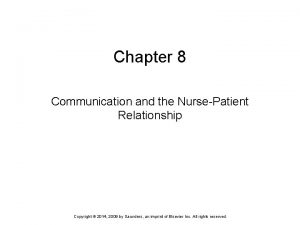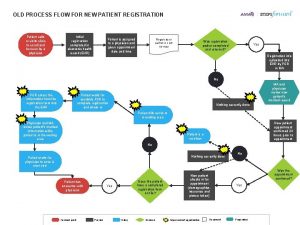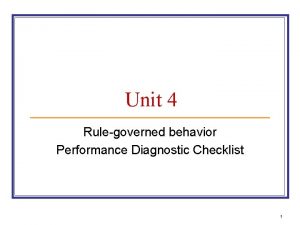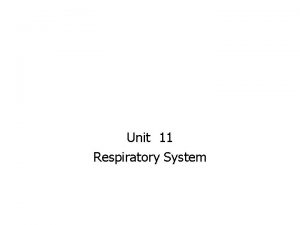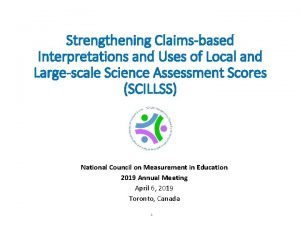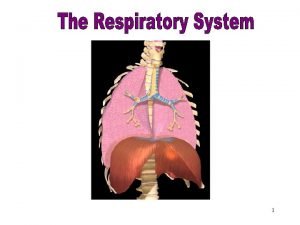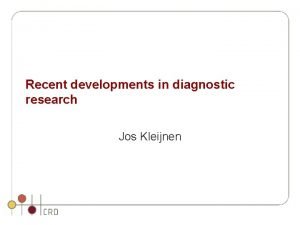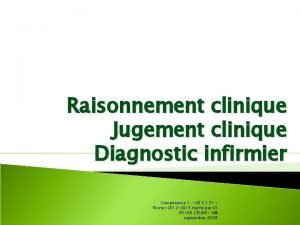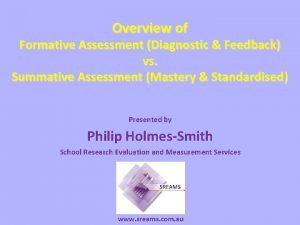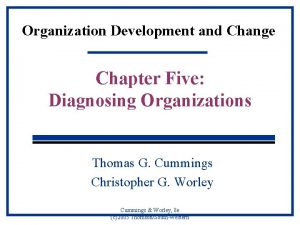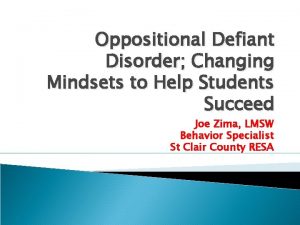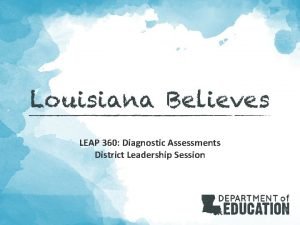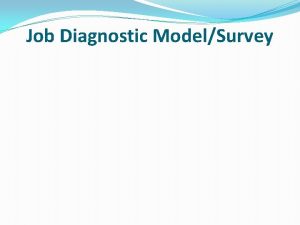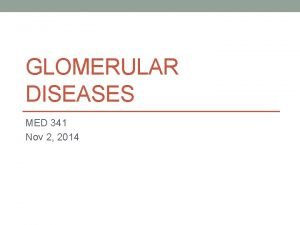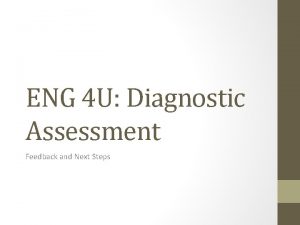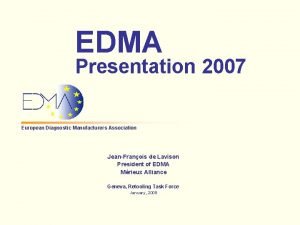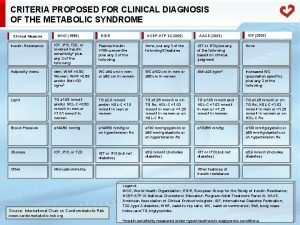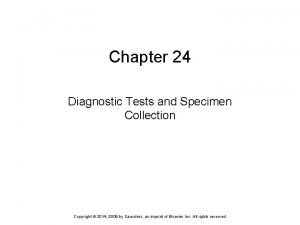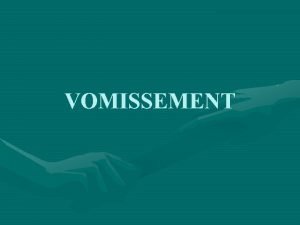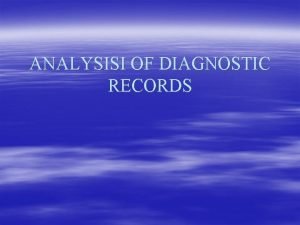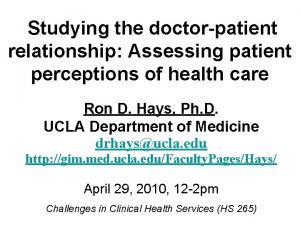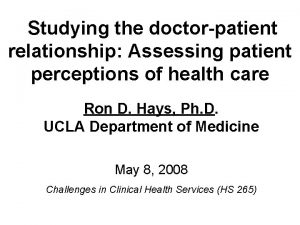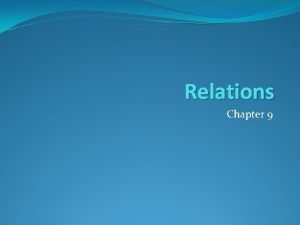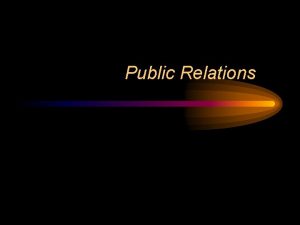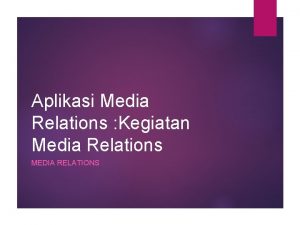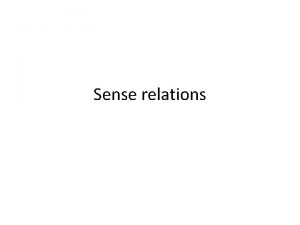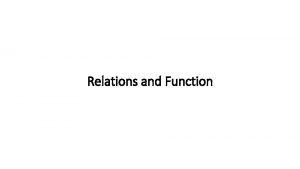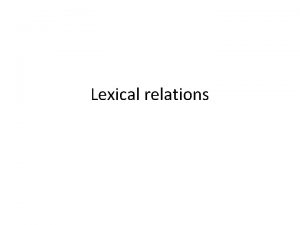Psychology of diagnostic process relations doctorpatient nurse patient






























































- Slides: 62

Psychology of diagnostic process, relations “doctor-patient, „nurse -patient", contacts with relatives of a patient. Psychological bases of communication in a medical process: communicative competence, functions of communication. Role of psychological features of doctor and nurse “ideal doctor” and “ideal nurse". Medical deontology.

PEOPLE NEED TO TALK. Families become united and stable by communicating. Communities and social groups bond together for the attainment of shared goals and commitments. Democracy as a form of government in many countries is sustained through freedom of speech or communication. Nations protect their common interests and purposes through oral communication.

WHAT IS COMMUNICATION? Communication is about sending and receiving information or the transmission of information and meaning from one party to another through using shared symbols. © Photo. Disc

VALUES OF COMMUNICATION 1. 2. 3. 4. Communication helps us to define and understand ourselves and our environment. Communication breaks barriers between two or more persons, thus, leading to relationships. Communication creates bonding in groups and affirms the human need to belong. Communication facilitates cooperative action toward goal attainment.

VALUES OF COMMUNICATION 5. Communication informs and enlightens people for knowledge’s sake and informed judgment. 6. Communication leads to enduring friendships and intimacy between individuals and among groups. 7. Communication enhances our understanding and respect for different cultures. 8. Communication opens avenues for growth of the individual ad society.

COMMUNICATION PROCESS MODEL Sender Message Channel Medium Receiver Feedback © Photo. Disc

ONE-WAY AND TWO-WAY COMMUNICATION One-way communication Information flows only in one direction – from the sender to the receiver with no feedback A much common way of communication because it is faster and easier for the sender and there is no trouble from disagreement. There may be mistakes in transmission of information.

ONE-WAY AND TWO-WAY COMMUNICATION A process in which information flows in two. One-way communication directions –the receiver provides feedback and the sender receptive to the feedback. It is more accurate and fewer Two-way communication mistakes in transmission. But it is time-consuming and more difficult for the sender.

CHANNELS OF COMMUNICATION Vertical communication channels Lateral communication: © Photo. Disc

CHANNELS OF COMMUNICATION Vertical communication Information passes downwards or upwards in the organization. Downward communication means that the manager tells employees about a decision that has been already made. It allows decisions to carried out quickly. Upward communication refers to employees’ giving feedback to the manager about the decision. It helps managers to understand employees’ ideas on the decision.

CHANNELS OF COMMUNICATION Vertical communication Lateral communication People in the same level within an organization pass information to each other. It can strengthen the understanding and coordination between people in different departments.

CHANNELS OF COMMUNICATION Figure 22 -2 Vertical and lateral communication Board of directors Financial dept. Marketing dept. Employees © Photo. Disc

COMMUNICATION MEDIA Written communication media Oral communication media Electronic communication media © Photo. Disc

COMMUNICATION MEDIA Communication through: Written communication Letters, Memos, Reports, Forms , Notice boards and Internal magazines or newspapers Messages can be revised several times. The sender can not receive immediate feedback.

QUESTION FOR CRITICAL THINKING There are various types of written communication: letters, memos, reports, forms, notice boards, internal magazines and newspapers. Could you briefly explain what each of them may be used for? © Photo. Disc

COMMUNICATION MEDIA Face-to-face discussions, telephone conservations, formal Written communication presentations and speeches Advantages: Questions can be asked answered directly; feedback is immediate; and the Oral communication sender’s attitude can be sensed. Disadvantages: few permanent records

COMMUNICATION MEDIA Communication through electronic media such as Written communication mobile phone, paging devises, lap top computers, E-mail, fax machines, and electronic notice boards Oral communication Messages can be delivered instantly, over long distances, and to a large Electronic communication number of people. But not all people have can access to the media. © Photo. Disc

QUESTION FOR CRITICAL THINKING Good communication is important to a business. There are different channels of communication, and various communication media for us to choose. Can you explain how you can achieve good communication in the business? © Photo. Disc

ORAL OR SPEECH COMMUNICATION Oral or speech communication is the preferred form of communication because it flows spontaneously and directly between individuals. Although public speaking no longer defines the scope of human communication, its functions for a society are equally important to individuals and groups (Gronbeck et al 1994)

FUNCTIONS OF SPEECHES 1. 2. 3. 4. Speeches are used for selfdefinition. Speeches are used to disseminate ideas and information. Speeches are used to debate questions of fact, value, and policy in communities. Speeches are used to transform individuals and groups.

WHAT IS NON VERBAL COMMUNICATION? Nonverbal communication has been defined as communication without words. It includes apparent behaviors such as facial expressions, eyes, touching, and tone of voice, as well as less obvious messages such as dress, posture and spatial distance between two or more people. A communication where action speaks louder than words.

According to the social anthropologist, Edward T. Hall, in a normal conversation between two persons, less than 35% of the social meanings is actually transmitted by words. So, at least 65% of it is conveyed through the body (non-verbal channel).

CHARACTERISTICS OF NONVERBAL COMMUNICATION Intentional or unintentional Ambiguous Primary Continuous Multi-channeled

TYPES OF NONVERBAL COMMUNICATION Kinesics Paralanguage Vocal interferences Spatial Usage Self-presentation cues

KINESICS Eye Contact Facial expressions Gesture Posture Touch

Some movements provide information about emotions Some give info about personality traits or attitude

EMBLEMS nonverbal acts with a direct verbal translation a word or two or a phrase. . . generally culture specific

EMBLEMS Thumbs up OK V with fingers peace Finger pointed to temple suicide Hand grasping throat choke hand to mouth eating tilt head, eyes closed sleeping

USE OF EMBLEMS 1 When verbal channels of communication are blocked Sign language of the deaf Gestures used by television production personnel Gestures used by SWAT team

USE OF EMBLEMS 2 Signs between two underwater swimmers. Motions made by people too far apart to hear each other well. We choose emblems the way we choose words We don’t think very much about it. We generally don’t string emblems together.

EYE CONTACT Staring- challenges Glances - socially acceptable timing Appraisal- may indicate interest

FACE AND EYES Over 1000 distinct facial expressions Eyes can be especially expressive • “Windows to the soul” Men and women have been found to be equally expressive • Men show the most emotion in the lower left quadrant of their face • Women show emotion over their whole face

FACIAL EXPRSSION Facial expressions reflect emotion, feelings and attitudes.

GESTURES of a person include attitude or movements. For example, when a boy is sad he may droop his head and walk slowly. Or, if a girl is happy, she might run and jump or stand up straight and put her hands in the air.

POSTURE • Reactions to an invasion of your space • Getting defensive • Becoming aggressive • Retaliation


TOUCH Touching and being touched are essential to a healthy life Touch can communicate power, empathy, understanding

TOUCH Touching is considered essential and therapeutic Touching can influence liking and compliance Is used to show intimacy or power/control People with high status touch others/invade others’ spaces more than people with lower status

VOICE/PARALANGUAG E Consists of vocal tone, speed, pitch, volume, number and length of pauses, and disfluencies (“um”s, “ah”s), etc. Paralanguage tends to be more powerful than language Affects how other’s perceive us • Stereotyping (e. g. , accents, vocabulary, grammar Influenced by culture, gender, class (intentionally or unintentionally)

SPATIAL USAGE Proxemics • Intimate distance • Personal distance • Social distance • Public Distance Territory

SPACE/PROXEMICS Personal Space Intimate distance Personal distance Social distance Public distance Barrier behaviors and territory You are here

SELF-PRESENTATION CUES Physical Appearance Time (Chronemics) Olfactory Communication

PHYSICAL APPEARANCE “Beauty is in the eye of the beholder” We tend to notice obvious things first (gender, race), then note attractiveness Physically attractive people generally are perceived better Importance placed on physical appearance can be very damaging It’s what we do with it that’s most important

SOME OTHER ELEMENTS OF NON VERBAL COMMUNICATION Personal space at work Your office Your desk A table in the cafeteria that you sit at regularly

ENVIRONMENT Communicates something about you • We surround ourselves with things that are important/meaningful to us • Use artifacts to define our territory Can influence interactions How people use an environment communicates something about them

ARTIFACTS Include clothing, jewelry, personal belongings, accessories, etc. Communicate economic level, educational level, trustworthiness, social position, level of sophistication, economic background, social background, educational background, level of success, moral character, masculinity/femininity Important part of first impressions

COLOR INFLUENCES COMMUNICATION Yellow cheers and elevates moods Red excites and stimulates In some cultures black suggests mourning Blue comforts and soothes In some cultures white suggests purity

CULTURAL INFLUENCES Non verbal signals vary form culture to culture

IMPROVING NONVERBAL COMMUNICATION SKILLS When sending messages • • • Be conscious of nonverbal behavior Be purposeful in use of non-verbals Make sure non-verbals are not distracting • Match verbal and nonverbal communication • Adapt to the situation

When receiving messages • • Don’t automatically assume Consider gender, culture and individual differences • Pay attention to all aspects of nonverbal communication • Use perception checking


SUICIDE IS… 1. A form of behavior designed to deal with and solve a problem. 2. A goal-oriented coping method. 3. A way to take control. 4. The ultimate revenge.


RISK FACTORS Past suicide attempt (See diagram on right) After a suicide attempt that is seen in the ER about 1% per year take their own life, up to approximately 10% within 10 years. * 56 More recent research followed attempters for 22 years and saw 7% die by suicide. **

RISK FACTORS Symptom Risk Factors During Depressive Episode: • • • Desperation Hopelessness Anxiety/psychic anxiety/panic attacks Aggressive or impulsive personality Has made preparations for a potentially serious suicide attempt* or has rehearsed a plan during a previous episode • Recent hospitalization for depression • Psychotic symptoms (especially in hospitalized depression) 57 *Coryell W, Young et al, J Clin Psych, 2005

PROPOSED DSM-V SUICIDE ASSESSMENT DIMENSION Level of concern about potential suicidal behavior: Sum of items Suicide coded as risk factor groups: present Lowest concern 0 1. Any history of a suicide attempt Some concern 1 -2 2. Long-standing tendency to lose temper or become aggressive with little provocation Increased concern 3 -4 3. Living alone, chronic severe pain, or recent (within 3 months) significant loss High Concern 5 -7 4. Recent psychiatric admission/discharge or first diagnosis of MDD, bipolar disorder or schizophrenia 5. Recent increase in alcohol abuse or worsening of depressive symptoms 7. Current psychomotor agitation, marked anxiety or prominent feelings of hopelessness 58 6. Current (within last week) preoccupation with, or plans for, suicide

ORTHODOX PSYCHIATRIC VIEW The orthodox psychiatric view is that suicide is primarily the result of psychiatric disorder and is therefore predictable and preventable

Illustration. Thich Quang Duc burned himself to death in Saigon (Vietnam) in 1963. He was protesting the way, in his view, the

Illustration. Jo Shearer, a 56 year old accomplished journalist who suffered intractable pain. She advised colleagues of her intention and ended her life.

THE IMPACT OF SUICIDE ON OTHERS

YOU CAN HELP Intervention Step One: • Show You Care • Be Genuine 63 •

 Roles of scrub nurse
Roles of scrub nurse Nurse logic ati
Nurse logic ati Phases of nurse-patient relationship ppt
Phases of nurse-patient relationship ppt Nurse to patient ratio picot question
Nurse to patient ratio picot question Phases of nurse patient relationship
Phases of nurse patient relationship Phases of nurse patient relationship
Phases of nurse patient relationship Phases of nurse patient relationship
Phases of nurse patient relationship Procedure for admitting a patient
Procedure for admitting a patient Chapter 8 communication and the nurse patient relationship
Chapter 8 communication and the nurse patient relationship The nurse has obtained the patient's oral medications
The nurse has obtained the patient's oral medications Role of nurse in patient teaching ppt
Role of nurse in patient teaching ppt Patient 2 patient
Patient 2 patient Employee relations in public relations
Employee relations in public relations User registration process flow diagram
User registration process flow diagram Pharmacist patient care process examples
Pharmacist patient care process examples Positive psychology ap psychology definition
Positive psychology ap psychology definition Social trap
Social trap Fundamental attribution error ap psychology
Fundamental attribution error ap psychology Branches of psychology pdf
Branches of psychology pdf Social psychology is the scientific study of:
Social psychology is the scientific study of: Health psychology definition ap psychology
Health psychology definition ap psychology Classroom diagnostic tools
Classroom diagnostic tools Pega predictive diagnostic cloud
Pega predictive diagnostic cloud U of mn diagnostic lab
U of mn diagnostic lab Performance diagnostic checklist
Performance diagnostic checklist Diagnostic test of respiratory system
Diagnostic test of respiratory system Ttp diagnostic criteria
Ttp diagnostic criteria Marketing research function
Marketing research function Diagnostic assessment examples
Diagnostic assessment examples Sample diagnostic report for speech-language pathology
Sample diagnostic report for speech-language pathology Infirmière en addictologie rôle
Infirmière en addictologie rôle Rhinorrhea
Rhinorrhea Diagnostic odds ratio
Diagnostic odds ratio Jugement clinique
Jugement clinique Polycythemia vera diagnostic criteria 2021
Polycythemia vera diagnostic criteria 2021 Diagnostic feedback definition
Diagnostic feedback definition Organization-level diagnostic model
Organization-level diagnostic model Oppositional defiant disorder in adults
Oppositional defiant disorder in adults Siadh diagnostic criteria
Siadh diagnostic criteria Curriculum management hod management plan template
Curriculum management hod management plan template Syndrome de susac irm
Syndrome de susac irm Maha diagnosis
Maha diagnosis Leap 360 geometry interim test form 3 answer key
Leap 360 geometry interim test form 3 answer key Leap 360 scoring guide
Leap 360 scoring guide Diagnostic stratégique
Diagnostic stratégique Diagnostic interne de zara
Diagnostic interne de zara Siadh diagnostic criteria
Siadh diagnostic criteria Hackman and oldham model
Hackman and oldham model Amebiasis symptoms
Amebiasis symptoms Ifsi croix rouge marseille
Ifsi croix rouge marseille Tea and toast syndrome
Tea and toast syndrome Iready diagnostic scores by grade
Iready diagnostic scores by grade Diagnostic test meaning
Diagnostic test meaning Diagnostic educatif
Diagnostic educatif Grammar feedback examples
Grammar feedback examples European diagnostic manufacturers association
European diagnostic manufacturers association Diagnostic link 8
Diagnostic link 8 Comprehensive model for diagnosing organizational systems
Comprehensive model for diagnosing organizational systems Diabète gestationnel diagnostic
Diabète gestationnel diagnostic Diagnosis of insulin resistance
Diagnosis of insulin resistance Diagnostic tools loopback adapter
Diagnostic tools loopback adapter Each e/m code description identifies the
Each e/m code description identifies the Chapter 24 diagnostic tests and specimen collection
Chapter 24 diagnostic tests and specimen collection








